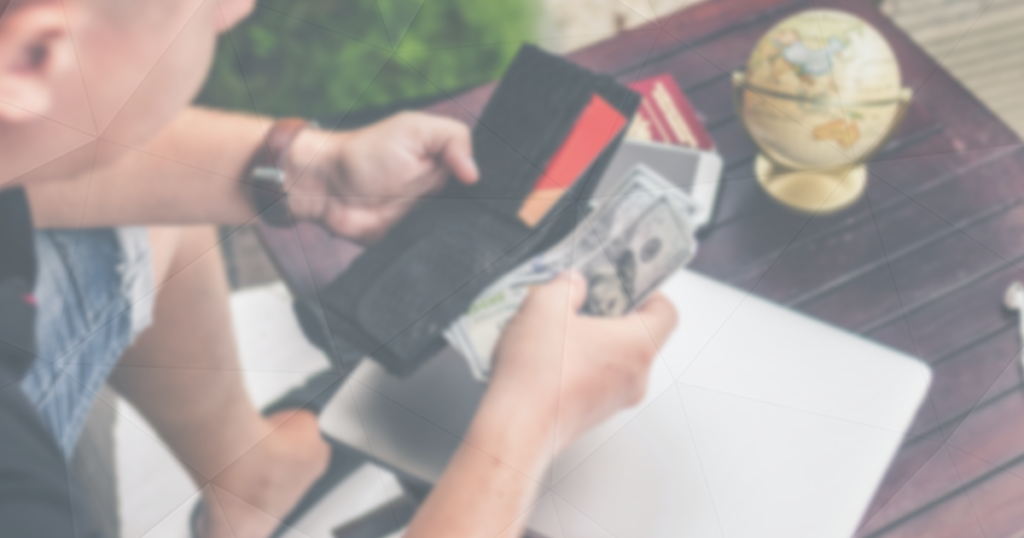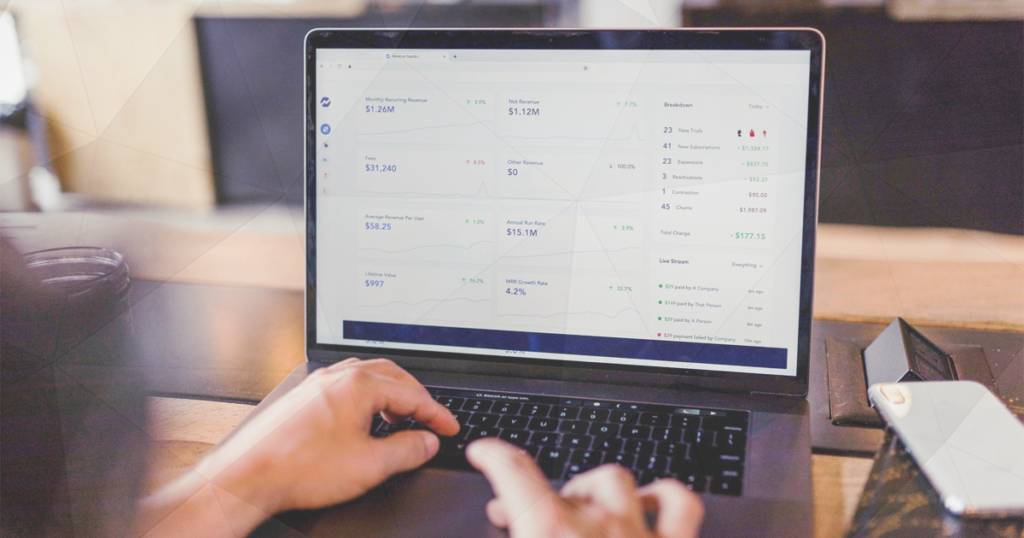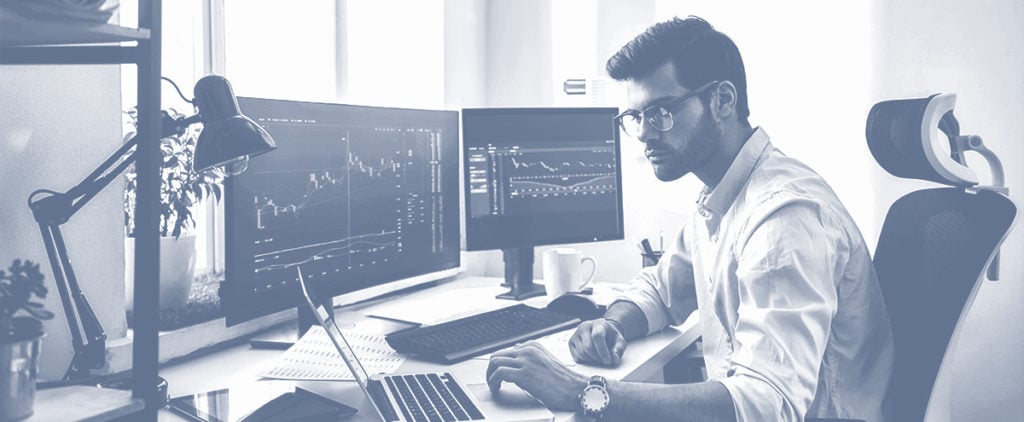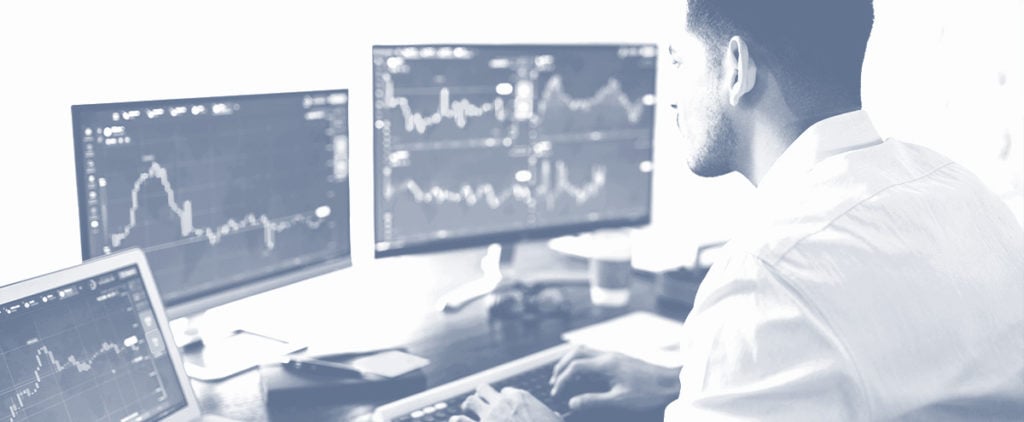Paper Trading: What is It and How to Do It Effectively

Paper trading is an invaluable tool for traders who want a risk-free way to learn to trade, analyze the markets, and back-test their trading strategies. Let’s take a closer look at what paper trading is and how you can use it to improve your live trading performance.
- Set up your own paper trading account here: Practice Trading
Paper Trading Explained
Paper trading, also known as demo or practice trading, is a risk-free trading environment where traders can trade live markets and test their trading strategies without risking real money in the process.
Paper trading simulates real trading as it comes with real-time price feeds and the ability to place buy and sell orders, but without the need to deposit real funds with your broker.
This means, any profit you make when paper trading isn’t a real profit and can’t be withdrawn, but also any loss that you face while paper trading isn’t a real loss and doesn’t have any monetary implications.
Traders usually use paper trading to improve their trading skills and back-test trading strategies, but also to get used to all the tools and features of their trading platform and to develop sound risk management skills.
- Develop into a well informed, confident private trader, take our premium course: Trading Foundations Programme
Getting Started with Paper Trading
The majority of brokers offer paper trading accounts, popularly known as demo accounts, to their existing and prospective clients. Beginner traders usually start trading with a paper account first before depositing real funds and opening a live trading account. You can set up a practice account here.
Paper trading comes with indisputable advantages for newbie traders as it offers an easy and risk-free way to get your feet wet in trading. You can learn how markets operate and how to place buy and sell orders on your trading platform, how to use stop-loss and take-profit orders, how to draw trendlines and identify support and resistance level on real-time price feeds, but also how to develop a profitable trading strategy and manage your open trades.
Unfortunately, there are also some major drawbacks when it comes to paper trading. Most experienced traders agree that a paper trading environment doesn’t provide the same emotional response as live trading. Traders tend to underestimate profits and losses when they’re not real and don’t show the same degree of fear and greed that is otherwise present in live trading.
Benefits of Paper Trading
Let’s first start with the main benefits of paper trading. There are many advantages to start trading on a demo account first before risking real money in the markets.
Sharpen your trading skills
Paper trading offers a unique way to learn trading without any monetary risks. When paper trading, you’re dealing with real-time price-feeds and you have the same trading tools at your disposal as in live trading.
You can learn how financial markets work and how they react to various news reports, how to use market orders and pending orders, and how to use the built-in technical analysis tools of your trading platform.
However, for paper trading to have a positive effect on your learning curve, you need to treat it as a real business. You need to imagine that you’re trading with real money – your money. If you’re not profitable on a demo account, you’ll have a hard time becoming profitable on a real trading account.
Develop effective trading habits
Even before opening a live trading account, you can use paper trading to develop healthy and effective trading habits. As noted in the previous point, you need to treat paper trading as if the money involved is real.
Here is a trading routine that I like to follow: I wake up early in the morning (before the UK markets open) and take a look at the most important news for the Asian session. I take a look at how Asian markets have closed, what the futures market is doing, and what currencies are the strongest and weakest for the morning. After that, I scan the economic calendar to find important market reports and check technical levels for financial instruments that I am interested to trade.
All this can be done seamlessly on a demo account. Just stick to it until your trading routine becomes a habit.
Learn how to control your risk
Another advantage of paper trading is that it allows you to practice controlling risk without risking real money. Risk management is crucial for long-term profitability in the markets, and paper-trading can help you to understand complex concepts such as position sizing, position scaling (in and out), and volatility stops, to name a few.
As a golden rule, I never risk more than 1% percent of my trading account on any single trade – others are more aggressive and risk more but the point remains the same, traders only risk a few percent at most. After you determine your total risk for a particular trade and define potential stop-loss levels for the trade, you can easily calculate your optimal position size.
While paper trading, you can also learn more about how to scale in and out of trades. Scaling-in works best when you’re already in a profitable position, which allows you to take advantage of your unrealized profits when placing new trades. Scaling-out should be done when a trade doesn’t perform as expected, allowing you to cut and minimize your losses.
Find the markets that work for you
Not all markets follow the same dynamics and paper trading allows you to find those markets that work best for your trading strategy. Commodity markets behave differently than currency pairs, and stocks behave differently than crypto-currencies, for example.
While a well-rounded technical trader should be able to profitably trade various markets across all major asset classes, beginner traders should first focus on a market they’re interested to explore and learn more about. Paper trading allows you to find the markets you like to trade, without risking a single penny.
- Set up your own paper trading account here: Practice Trading
Get used to your trading platform
Another benefit of a risk-free trading environment is that it allows you to get used to your trading platform. Trading platforms can be quite complex and come with tons of features, so it will take some time until you’re fully comfortable with trading on your platform. The most important parts of your trading platform include placing orders (market and pending orders), creating watchlists, applying technical analysis tools such as trendlines and Fibonacci levels, and modifying existing trades. After you cover the main parts of your platform, you can play with some other features such as changing the color of your charts or set-up price notifications.
Back-test your strategies
Last but not least, a major advantage of paper trading is that it allows both back- and front-testing of your trading strategies. Back-testing refers to using historical prices to test potential entries and exits that your trading strategy would have generated. Front-testing, on the other hand, refers to using current real-time and future prices to test your strategy in a real market environment, as you would when live trading with your strategy.
Both beginners and experienced traders extensively use paper trading and demo accounts to back-test and front-test their trading strategies.
Disadvantages of Paper Trading
While the benefits of paper trading far outweigh the disadvantages, there are still some important drawbacks to consider when trading on a demo account.
You don’t trade with real money
Some readers would say that the fact that paper trading doesn’t involve real money is an important advantage of this type of trading. And while this is undoubtedly true, there is a catch: when no money is attached, traders tend to undervalue both the profits and losses.
In other words, paper trading creates an environment that is quite different compared to trading with real money. Profits and losses generate all kinds of emotions that simply aren’t as powerful on a paper trading account as they are on a live trading account.
This is also the reason why some trading mentors recommend staying on a demo account for only as long as necessary to get used to the markets and the trading platform and to start trading with real money as soon as possible. For some people, even trading with a $100 account can be more beneficial for observing your emotions than a $100k demo account.
Controlling your emotions when paper trading
As mentioned in the previous point, getting the same emotional response with paper trading and live trading is almost impossible. Emotions play a very important part in long-term trading success. Traders tend to feel greed when a trade goes in their favor and make all kinds of excuses to lock in their profits as soon as possible. This prevents profitable trades from performing and should be avoided most of the time. Learning how to stay disciplined while having a large position in good profits is hard to achieve with a demo account.
Similarly, when a trade doesn’t perform as expected and starts to move in the opposite direction, many traders don’t want to close the trade in loss. They hope the trade will reverse one more time, allowing them to close the trade in a small profit, or at least at breakeven. In other words, they are optimistic when they should be pessimistic (and close the losing trade to avoid larger losses), and pessimistic when they should be optimistic (locking in small profits when a trade goes in their favor.) Learning how to control fear and greed is very hard if there is no real money at stake.
Your results may be different with live trading
Many traders feel that their performance doesn’t remain the same once they switch from paper trading to a live trading account. There are many reasons why your results may differ, with emotional trading taking one of the top spots.
There can also be very small differences in platform rules between a demo and live trading environment – for example broker tolerances around slippage. These might have an impact on, say, a scalper testing a strategy.
Learning to trade with a set of rules immensely helps with destructive emotions in trading. When you follow rules, there is no reason to feel greed or fear in the markets, to cut your profits short, and to let your losers run. You simply follow your rules, and that’s it.
Final Words
Paper trading, or demo trading, is a great resource available to both beginners and experienced traders. Beginners are able to learn the basics of trading in a risk-free environment, get used to their trading platforms, and learn how to get rid of emotions in trading. Experienced traders can take advantage of demo accounts by back-testing and front-testing some new trading strategies before applying them on live markets.
While paper trading is an invaluable asset for those who are just getting started with trading, don’t forget that emotions are rarely the same on a demo account and on a live account. That’s why you shouldn’t waste much time on paper trading. Once you understand how markets work, how to place and modify different types of market orders, and how to properly size your positions, you should start trading live with a very small account and work your way up.
- Set up your own paper trading account here: Practice Trading





